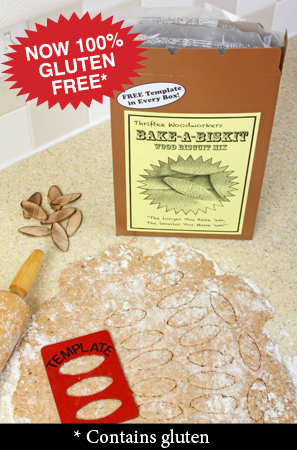
I’m trying to lose weight, and I’ve gotten hooked on this “Gluten-Free” diet. It’s been great, but I keep reading about finding “gluten-free grains.” I’ve had a sudden horrible, realization: What if the wood I’m using in my shop doesn’t fit my lifestyle?! What wood grains can I use that are gluten-free? What wood can I use that won’t make me feel bloated after I finish? – Ned Thedough
Dr. Sal Liac: Most fiberboard is loaded with glutens, thanks to the post-processing done to them. Pieces like MDF (short for “Most Definitely Flavorful”) set off my own allergies something fierce.
As for regular wood grains to avoid, remember that gluten helps things keep their shape, so it’s more common in soft woods like pines and firs. Most hardwoods are certified gluten-free and can be safely utilized in your workshop. Check the labels on your lumber before buying to ensure the wood you’re using in your shop is OK for your diet.
Jodi Gives: As you might imagine, we get this question a lot, Ned. In fact, I’ve been trying a similar diet lately and I had to look high and low on the market for gluten-free biscuits to use in my latest project. I don’t know about grains or fiberboards, but let me tell you, now I know a thing or two about biscuits. Thankfully, Thriftee Woodworker has introduced a new line of their baked woodworking biscuits that are 100% gluten-free.
They still taste a little woody, but they’re really handy to have around the shop, won’t flare up any allergies and can help you join up a tabletop in a pinch.
Matt Tzo (CEO Thriftee Woodworker): Just to clear up a common misconception, our Gluten Free Biscuit Mix™ does contain gluten.






